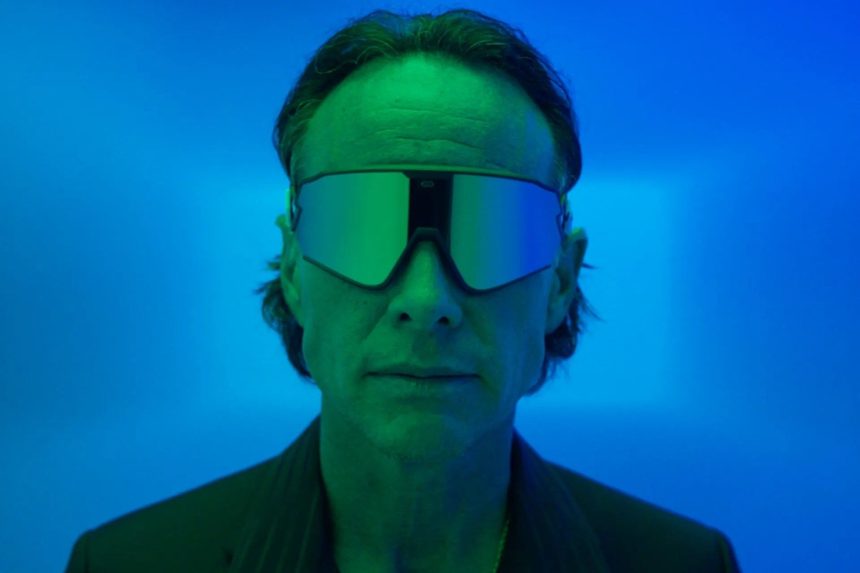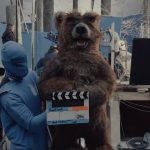In November, actor Walton Goggins of The Righteous Gemstones and Fallout fame got into the eyewear game. Alongside a formal press release, Goggins released five futuristic ski goggle–style glasses in bold colors with names like Cumulonimbus and Limoncello. They retail for $150 a pair.
The shades—called Walton Goggins Goggle Glasses and marketed on a website with a slick video of Goggins wearing the things and dancing to jazz—were swiftly covered by publications like GQ, the Hollywood Reporter, and People. “Yes, Walton Goggins really launched an eyewear line called ‘Goggins Goggles,’” GQ’s headline reads.
On Wednesday, it was revealed that the goggles are featured in an elaborate Super Bowl campaign for the web services company GoDaddy, which made a name for itself in the early aughts with provocative and sexist Super Bowl ads.
Fara Howard, GoDaddy’s CMO, told Marketing Brew that the campaign was “not a stunt” but said the company helped Goggins “birth his idea” for the glasses after it decided to enter the big game last year. Maggie Gallant, a spokesperson for Goggins Goggles, said that the actor came up with the idea for the product line prior to working with GoDaddy on the campaign. After the announcement this week, the Goggins Goggles website began to feature a banner highlighting that it was built with GoDaddy’s AI-powered tools, with an invitation for visitors to try it out for themselves.
So yes, Walton Goggins really has an eyewear line called Walton Goggins Goggle Glasses—and it’s part of a Super Bowl ad.
GoDaddy isn’t the first advertiser to leave a months-long trail of breadcrumbs leading up to the Super Bowl. Last year, one of the more memorable ads from the game started with a stunt, when Michael Cera was photographed holding bags of CeraVe lotion as part of a faux-outrage campaign leading up to its big-game reveal. And in 2023, Mars announced that its M&M “spokescandies” would be placed on an “indefinite pause” ahead of the big game following a rebrand, a decision covered by outlets including the Wall Street Journal. By the Super Bowl’s fourth quarter, though, the mascots were officially back.
Tim Calkins, a professor of marketing at Northwestern’s Kellogg School of Management, said that the unpredictable and high-stakes nature of the Super Bowl means brands are looking for inventive ways to stand out among competitors without revealing too much about their ads.
“You want to generate excitement without giving away the story,” Calkins said. “You also don’t want people to feel duped or totally misled, or if they are going to be duped and misled, it’s in the nicest kind of way, and that’s a really delicate balance to strike.”
Stunt doubles
For brands, there is a lot at stake. The Super Bowl is the biggest advertising stage available, and with 30-second ads going for as much as $8 million, brands are bringing their A-game—meaning there is plenty of creative competition. For that reason, many brands use their Super Bowl buys as the center of a larger advertising push that spans social, digital, and OOH.
Get marketing news you’ll actually want to read
Marketing Brew informs marketing pros of the latest on brand strategy, social media, and ad tech via our weekday newsletter, virtual events, marketing conferences, and digital guides.
To help mitigate the risks of being overshined during the game itself, Caulkins said, many brands are focused on grabbing the attention of consumers long before kickoff.
“Best case for a Super Bowl advertiser is they’ve already generated a positive return on investment before the game begins,” he said. “In that scenario, the game is just extra. It’s just gravy on top of an already successful marketing campaign.”
Stunts and teasers can also give advertisers “more bites at the apple,” said Marcus Collins, an assistant professor of marketing at the University of Michigan’s Ross School of Business and a Wieden+Kennedy alum.
Calkins said he wouldn’t recommend that brands embrace deliberate deception but acknowledged that surprising viewers in a way that’s “done in the right spirit” can help them stand out.
In most cases, Collins said, audiences are good-natured about any misdirection or otherwise don’t think much of it (although, he said, journalists unwittingly covering marketing stunts might not feel the same).
“There’s this implied social contract that the misdirect will have a payoff that’ll make it worth it,” he said.
See it to believe it
This year, there have been plenty of breadcrumbs laid out by marketers. Coors Light’s Super Bowl ad campaign kicked off in January with intentionally misspelled ads in the New York Times and on digital billboards in Times Square. The brand issued a press release calling the typo “unfortunate,” requiring a near-stratospheric suspension of disbelief, and eventually revealed that the so-called mistake was part of a campaign centered around literal (beer) cases of the Mondays.
With Coors Light, the spot appeared to at least ignite the thought-leadership crowd on Linkedin—“What can pharma learn from Coors Light?” one post read—but whether it reached the more general audience that’s intending to watch on Super Bowl Sunday is less clear, Michael Miraflor, founder and independent consultant at the marketing advisory firm Third City, told Marketing Brew.
“Did that carry over to everyday consumers?” Miraflor said. “Did they notice? Did they care?”
In some cases, audiences catch on before the big reveal. Earlier this year, there was talk of a When Harry Met Sally reunion featuring Billy Crystal and Meg Ryan, the stars of the iconic ’80s rom-com, that turned out to be—you guessed it—a Super Bowl ad for Hellmann’s.
A week before the ad was released, Ryan posted a teaser on Instagram, writing, “It’s finally happening, we’re reuniting for something iconic. Can’t wait to show you all soon 💙.”
At least one fan, though, had an inkling that something was up. “MEG,” they commented, “DON’T PLAY WITH ME IF THIS IS A DUMB ASS SUPER BOWL COMMERCIAL.”
Read the full article here










